Lively Veterans' Village Again | 眷村文化微遊程
已更新:2024年6月20日
吉客鏈:眷村文化創生 X 自創品牌 X 配合古蹟再造計劃
I and my family adore the veterans village' culture very much as it is a part of our gene.
(Photo Credit | Chi Hsu)
Veterans Quickly Settled
In 1949, the Government of the Republic of China (ROC) and the Kuomintang (KMT) retreated to Taiwan. [Note 1] With came millions of veterans and their families. My dad was one of veterans. How to settle the veterans and all of people became the critical issue in 1945~1956. They became the forth settlement after Dutch era (1624~1662), Qing dynasty (1662~1895) and Japanese colonial period (1895~1945).

(Photo Credit | Chi Hsu)
There were various ways to accomodate the soldiers, sailors, airmen and marines, such as: reusing the Japanese era housing, military self-build quarters, the private fund-rising quarters and some squatter places just nearby military bases, and adjacent to the villages, in the parks, and at schools/temples.
The military self-build quarters provided two types of ownership, mainly the land still owned by the state but after 1968 some newly built quarters were able to have freehold property right. My dad was lucky to own the freehold house in 1968(左營莒光新村)and then I was born in 1969.
Regeneration
Soon, most villages required regeneration because the simple and poorly built housing couldn't bear the typhoon and thunderstorm damages. Since 1985, the Kaohsiung's veterans village(果貿新村)regenerated as a social housing(果貿新城)and more programs applied into all leasehold villages.
In 2004, my mum took me to visit the first veterans village where she stayed with my dad when they were just married in 1964. Her guidance made the tiny quarter where I first visited, come alive, like a vivid picture of before I was born.
(Video Credit | Chi Hsu)
A couple years later, the local authorities needed the state-owned land of veterans village back for the other urban planning. The tiny quarter where my parents lived prior to 1968, had been demolished. Elsewhere the veterans village had the same situation - the land required an appropriate use for the future population.
Nowadays, while we pass the vast demolished area, it is hard not to think about the old scenery. I am very delighted that a video made before the urban regeneration executed.
886 Built, 13 Preserved
While the regeneration programs in the pipeline, the veterans' households had to re-arrange themselves with compensations. Time flies to the 21st century. The young veterans were only 20-year-old at the first battle but now they are 90-year-old grandpas. People once said "the old soldiers never die, they just fade away." To memorize the lifestyle of veterans village and the spirit of the soldiers, sailors, airmen and marines, 13 veterans village selected to be preserved across Taiwan.
I'm personally fond of the one near my parents house (a freehold veterans house), which I blogged it at Browsing in the Garden District | 花園般的眷村 . The 13 preserved villages are currently taking a place making program to revive the estate as a tourist destination.
Exceptional Place Making [Note 2]
Rainbow Village | 彩虹新村
The most popular attraction of veteran village was the Rainbow Village in Taichung, the central Taiwan. Lonely Planet Guide talked about it. However, it isn't actually one of those 13 villages as preserved cultural park. The village was a squatting one, adjacent to a registered veterans village.
During the registered veterans villages' demolishment, in 2008, the resident painter, grandpa Huang was bored so acted as the natural artist with using vibrant colors to paint every inch of his place and his neighbors' houses. In 2010, local university students discovered Huang's work and campaigned to preserve the village. In Sep. 2010, local authorities eventually agreed to keep Huang's artworks and adjoined the adjacent park as a Rainbow Art Park(彩虹藝術公園).
I visited there a couple of weeks ago, it is amazingly well-maintained, and adored immediately. Realised grandpa Huang has a cultural craftwork team to assist him to re-paint all drawings and licensed his IP to the team to design the lovely souvenirs.
(Photo Credit | Chi Hsu)
I also read a magazine's cover story, which introduced grandpa Huang's cat, and coincidently looked similar as Peru's Nazca Lines' cat. Very astonishing.
(Photo Credit | Chi Hsu)
A Marine Village | 自助新村
The destruction projects took place by the parallel, not only Taichung but also Kaohsiung (Tsoying), in south Taiwan. A marine veterans village demolished in 2014. People living in the neighborhood desired to preserve the village the same way as Rainbow village.
Initiated by few students the wall of resident housing was painted. The area covered was much bigger than the Rainbow one. It was indeed to become an attraction for couple years. My family visited there in Feb., 2011. Very emotional to browse all those photos again.
(Photo Credit | Ling Hsu in Feb, 2011)
However, it was a blessing in disguise as the local archaeological authorities discovered a heritage from the demolished land. The heritage was the remaining foundation of 'West Gate' of Tsoying stone walled city in Qing dynasty.
A central government supported bigger place making initiative is on the way for the general public and international tourists. (Please refers Old FongShan City - The First Stone Walled City in Taiwan | 左營舊城的「舊城」 ) It may take a longer to see the outcomes but the vision looks ahead brighter than the past.
[Note 1] In 1949, Former President Chiang Kai-Shek declared his counterattack plan - to prepare in one year, to counterattack in two years, to wipe out the communists in three years, and to return back mainland China in five years. Therefore, to keep simple and to live temporarily were the policy of accommodation.
[Note 2] (Source: PPS.org) Placemaking inspires people to collectively reimagine and reinvent public spaces as the heart of every community. Strengthening the connection between people and the places they share, placemaking refers to a collaborative process by which we can shape our public realm in order to maximize shared value. More than just promoting better urban design, placemaking facilitates creative patterns of use, paying particular attention to the physical, cultural, and social identities that define a place and support its ongoing evolution.

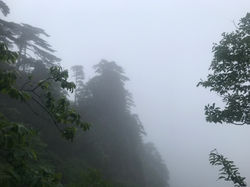








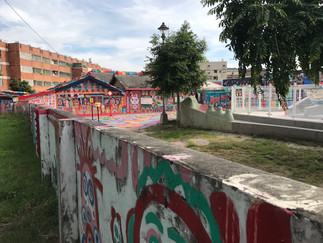
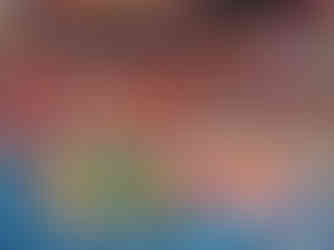




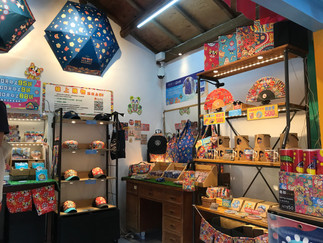



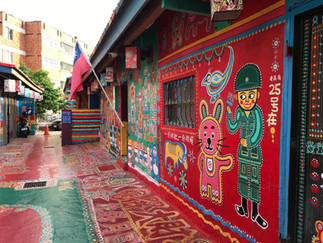
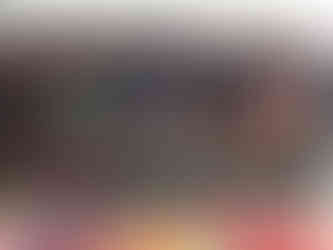
















Comments